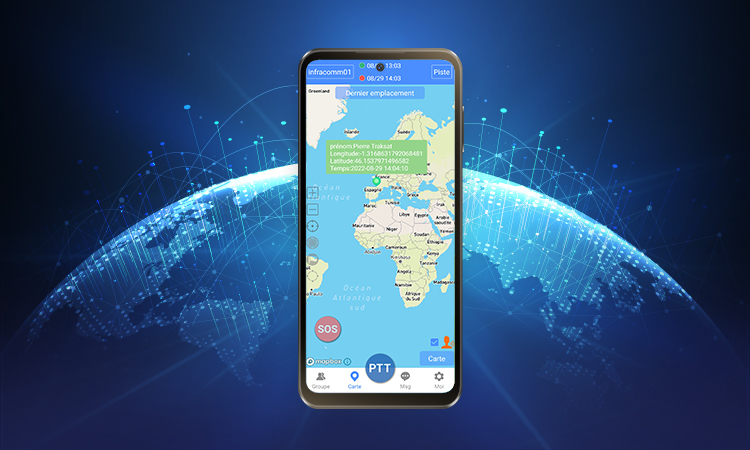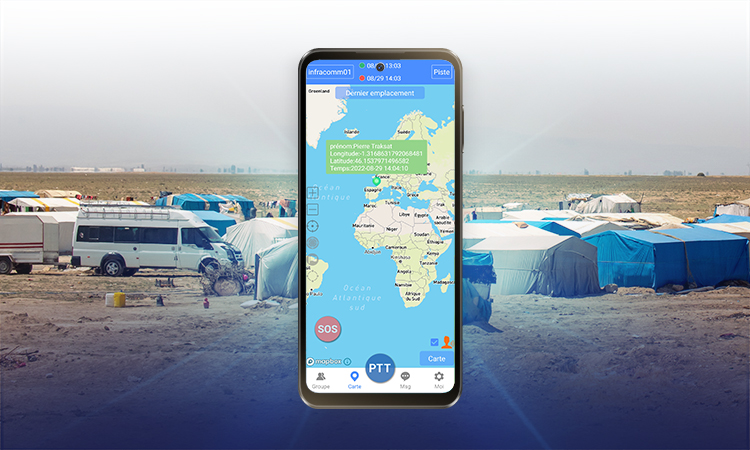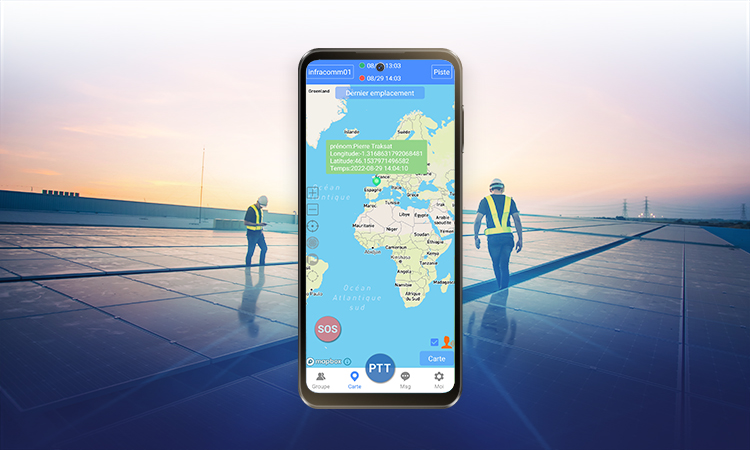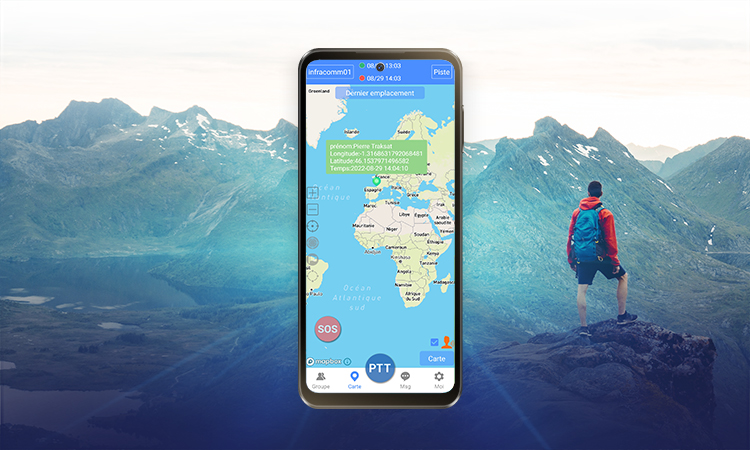Staying connected anywhere on the planet has become a given. People and companies no longer consider network access an ‘added benefit’ or ‘extra cost’; it is, in fact, the first requirement when setting up or moving to a new space. Telecommunications operators are actively working to fill gaps in their network coverage to deliver seamless connectivity to their customers and maintain a competitive edge.
Digital technologies empower organisations to thrive in an ever-changing operational landscape and reliable connectivity solutions are evolving to keep pace. Satellite communication (satcom) is a key driver of change in the field, enabling real-time data transfers, enhanced coordination, improved security solutions, and much more. With D2D technology, terrestrial dead zones will become a thing of the past as more and more devices become compatible and connect directly to satellites.
A report by GSMA Intelligence reflects upwards of $30 billion in total incremental connectivity revenue opportunities by 2035. According to NSR’s Satellite Direct to Device Markets, 4th Edition satellite D2D could generate USD137 billion in cumulative service revenue between 2022 and 2032. In light of this promising new paradigm in the satcom market, many companies such as GlobalStar, Bullitt, and Skylo are developing D2D businesses using their existing satellite spectrum to connect upgraded devices. D2D service providers are setting up multiple partnerships with terrestrial telecommunications companies to fill coverage gaps and tap into a potentially trillion-dollar market.
Device-to-device (D2D) communications technology enables a data transfer paradigm that bypasses a centralised network or base station, further lowering the latency factor in communications.
D2D technology can be applied in a range of crucial operational scenarios, facilitating prompt communication between HQ and remote enterprises, enabling advanced tracking services in areas without GSM coverage and enhancing the emergency response when terrestrial network infrastructure may be damaged.

Yahsat’s D2D strategy leverages the power of space tech to elevate global connectivity. Thuraya Telecommunications Company (the mobile communications subsidiary of Yahsat) intends to promote a D2D ecosystem in the L-band spectrum for mobile satellite services. Yahsat’s D2D plan is different from projects by satellite operators such as Starlink, Lynk Global and AST Spacemobile, who plan to offer D2D satellite services using the same spectrum bands used by MNOs for mobile services. Yahsat intends to use L- band spectrum allocated and licensed for mobile satellite services (MSS).
A part of Project BlueStar, Thuraya One is the first-ever dual cellular/satellite D2D Android smartphone that leverages connectivity through a scalable and sustainable satellite network. The launch of this state-of-the-art device in September 2024 aligns with Yahsat’s D2D strategy, offering voice and messaging capabilities in 2024 and IoT capabilities in 2025.
Delivering seamless connectivity, Thuraya One offers exciting communication opportunities in the field with a dust and water-resistant case, high-resolution display, three rear cameras and one front 50MP camera, SMS capability, and dual-mode dual-SIM functionality. Over GSM, the device will provide voice and data services and can be used for all types of applications, akin to a regular smartphone. Over satellite, Thuraya One will offer Device-to-Device service, allowing users to harness the capabilities of space technology anywhere in the world.
Committed to providing connectivity solutions wherever our customers operate, IEC Telecom takes the Thuraya One’s capabilities to a new level, enabling Push-to-Talk (PTT) functionality and tracking over the same device. These features are essential for critical missions, supporting cost-effective group communications on the ground, instant distribution of important updates, and real-time monitoring of user geolocation by the HQ.
The Traksat PTT solution encompasses a dispatch console for remote administration and an intuitive end-user application. In satellite mode, Traksat enables PTT services, geofencing, push notifications, SOS functionality, two-way messaging and more. In cellular mode, the PTT solution over Thuraya One will also support the exchange of multimedia and video calls.

The escalating risk of natural disasters and growing geopolitical tensions underscore the critical need for humanitarian assistance. With aid operations facing mounting pressure, budgetary concerns become paramount. NGO operations necessitate dependable and readily deployable solutions that don’t require substantial supportive infrastructure. Thuraya One is ideally situated to meet this demand.
Thuraya One offers flexibility to humanitarian workers, who can use a cellular network for their daily tasks and switch to a satellite network when required. Thuraya One empowers aid workers with seamless connectivity in dual satellite/GSM mode over a rugged device. IEC Telecom, in turn, expands the Thuraya One’s functionality with its value-added services. Empowered by the Traksat application, Thuraya One offers a cost-effective PTT solution and tracking.
With PTT functionality, Thuraya One can be used as a radio, facilitating the coordination of rescue operations. GPS tracking, in turn, will provide visibility over the team’s deployment, helping HQ monitor the progress and send reinforcements to a specific user as soon as an alert is received. Thuraya One keeps first responders connected and operational at all times.

In our hybrid workspaces, coordination with remote workers is vital to keep enterprises functioning efficiently and cost effectively. In an environment where remote workers are often not stationary, and in fact, move between areas with and without GSM coverage, satellite communications complement network accessibility and support business continuity.
Thuraya One is offered with a comprehensive set of value-added services by IEC Telecom to enable advanced coordination of remote enterprises. With the Traksat Push-To-Talk solution, Thuraya One can be used for PTT services, geofencing, push notifications, SOS functionality, and two-way messaging even in low-bandwidth environments. In cellular mode, the PTT solution over Thuraya One supports the exchange of multimedia and video calls.
Additionally, Traksat PTT services empower the HQ with in-depth insights over the performance of remote teams. Supported in both GSM and satcom modes, tracking and patrol services enable engagement with indispensable remote staff, exceptional assets in the field.

Scientific missions inherently require reliable communications among team members in the field and the core research experts located at centralised institutions. In an environment where it is crucial to quickly identify and categorise discoveries, conduct assessments and analysis, and maintain access to data and resources, satellite connectivity significantly improves the quality of communications across vast areas.
Thuraya One offers scientific missions an elevated user experience. PTT functionality (enabled by Traksat) provides a convenient way to coordinate exploration in remote areas. The Traksat app can provide GPS and a multi-functional integrated scheduling system. Moreover, the in-built tracking and SOS functionality ensures the safety of team members.
Additionally, Traksat PTT automatically time stamps and stores voice, video, and NFC checks. The system stores all inbound and outbound records in a database – an important advantage over voice communications, where incidents (including video) can be reviewed at a later date.